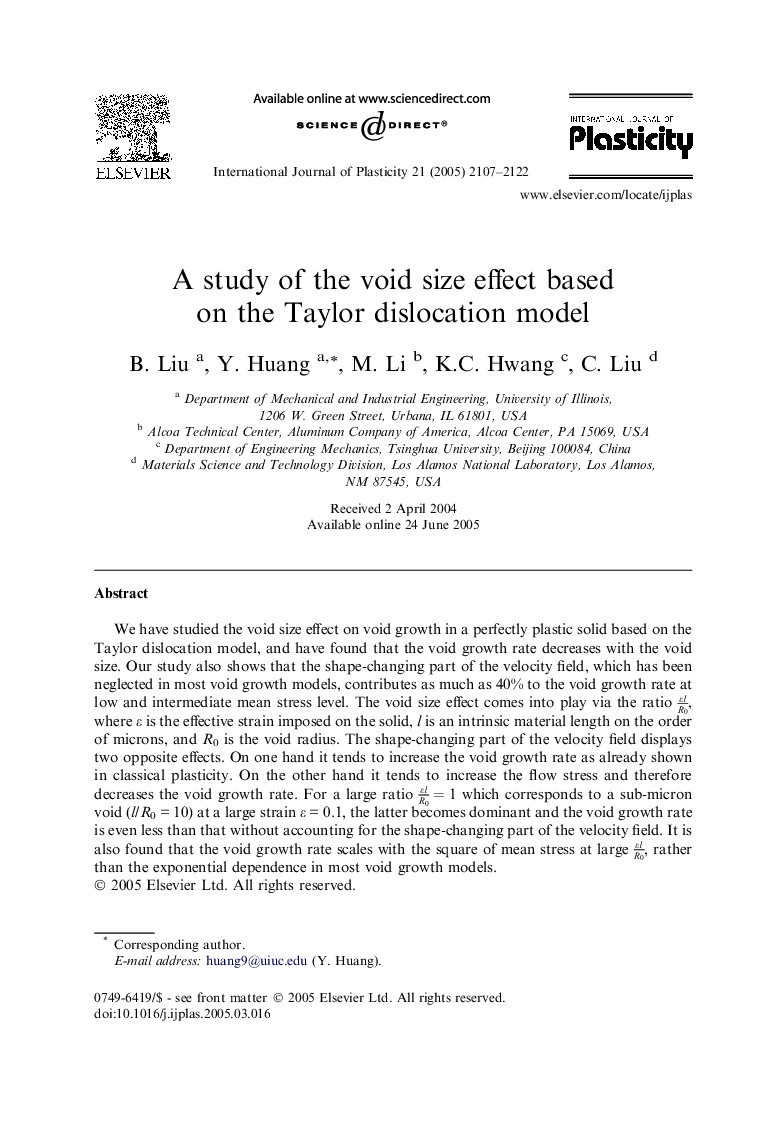| Article ID | Journal | Published Year | Pages | File Type |
|---|---|---|---|---|
| 789295 | International Journal of Plasticity | 2005 | 16 Pages |
We have studied the void size effect on void growth in a perfectly plastic solid based on the Taylor dislocation model, and have found that the void growth rate decreases with the void size. Our study also shows that the shape-changing part of the velocity field, which has been neglected in most void growth models, contributes as much as 40% to the void growth rate at low and intermediate mean stress level. The void size effect comes into play via the ratio εlR0, where ε is the effective strain imposed on the solid, l is an intrinsic material length on the order of microns, and R0 is the void radius. The shape-changing part of the velocity field displays two opposite effects. On one hand it tends to increase the void growth rate as already shown in classical plasticity. On the other hand it tends to increase the flow stress and therefore decreases the void growth rate. For a large ratio εlR0=1 which corresponds to a sub-micron void (l/R0 = 10) at a large strain ε = 0.1, the latter becomes dominant and the void growth rate is even less than that without accounting for the shape-changing part of the velocity field. It is also found that the void growth rate scales with the square of mean stress at large εlR0, rather than the exponential dependence in most void growth models.
